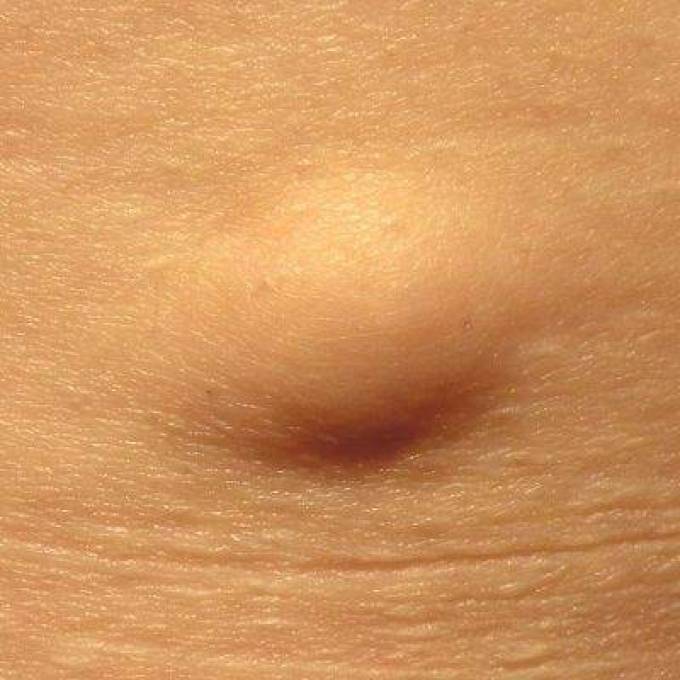Uncovering the Truth About Lipoma Treatment
Published By Bisma Jamal, 14 Sep 2024

Lipomas are benign fatty tumors that, while generally harmless, can cause discomfort or cosmetic concerns. Understanding the truth about Lipoma Treatment in Dubai is crucial for making informed decisions and ensuring effective management of this condition. This guide delves into the facts, debunks myths, and provides insights into various treatment options available for lipomas.
1. What is a Lipoma?
1.1. Definition and Characteristics
- Overview: A lipoma is a soft, movable lump made of fatty tissue that typically forms under the skin. It is usually painless and grows slowly.
- Common Locations: Lipomas are most commonly found on the upper body, arms, or thighs but can occur anywhere on the body.
1.2. Diagnosis
- Physical Examination: A healthcare provider can often diagnose a lipoma through a physical exam by feeling the lump and assessing its characteristics.
- Imaging and Biopsy: In some cases, imaging tests like ultrasound, MRI, or CT scans may be used to determine the size and depth of the lipoma. A biopsy might be necessary if there's uncertainty about the diagnosis.
2. Common Treatment Options
2.1. Surgical Excision
- Overview: This is the most definitive method for removing a lipoma. It involves making an incision to remove the lipoma along with a small margin of surrounding tissue.
- Benefits: Provides a permanent solution by removing the lipoma entirely, thus reducing the risk of recurrence.
- Considerations: Requires local anesthesia and involves a recovery period with potential scarring.
2.2. Liposuction
- Overview: Liposuction uses a thin tube to suction out the fatty tissue of the lipoma. This minimally invasive procedure is performed under local anesthesia.
- Benefits: Less invasive than traditional surgery, with a quicker recovery time and minimal scarring.
- Considerations: May not be suitable for very large lipomas or those located deeply.
2.3. Laser Treatment
- Overview: Laser treatment involves using focused light to break down and vaporize the lipoma tissue. It is a precise, minimally invasive option.
- Benefits: Results in minimal scarring and involves a quick recovery time.
- Considerations: Best for superficial lipomas and may not be effective for larger or deeply located ones.
2.4. Cryolipolysis (CoolSculpting)
- Overview: Cryolipolysis applies controlled cooling to freeze and destroy fat cells. This non-surgical approach does not require incisions.
- Benefits: Painless with no downtime, suitable for small to medium-sized lipomas.
- Considerations: Not a permanent solution; results may vary, and multiple sessions may be needed.
2.5. Steroid Injections
- Overview: Steroid injections are administered directly into the lipoma to reduce inflammation and fat accumulation.
- Benefits: Can reduce the size of the lipoma and may provide temporary relief from symptoms.
- Considerations: Typically used for reducing size rather than complete removal, and may require repeated treatments.
3. Debunking Common Myths
3.1. Lipomas are Cancerous
- Fact: Lipomas are benign tumors and are not cancerous. They are composed of fatty tissue and generally do not pose a serious health risk.
3.2. Lipomas Will Always Grow Larger
- Fact: Not all lipomas grow significantly in size. While some may grow slowly, others may remain stable in size for long periods.
3.3. Home Remedies Can Cure Lipomas
- Fact: While some natural remedies claim to reduce lipoma size, there is no scientific evidence supporting their effectiveness. Medical treatment is typically required for significant changes.
3.4. Lipomas Will Disappear on Their Own
- Fact: Lipomas usually do not disappear on their own. Medical intervention is often necessary to remove or reduce them, especially if they cause discomfort or cosmetic concerns.
3.5. Lipomas Always Require Surgery
- Fact: While surgical excision is a common treatment, there are alternative methods like liposuction, laser treatment, cryolipolysis, and steroid injections that can be effective depending on the lipoma’s characteristics.
4. Choosing the Right Treatment
4.1. Factors to Consider
- Size and Location: Larger or deeper lipomas may require more invasive treatments, while smaller or superficial ones might be managed with less invasive methods.
- Symptoms: If the lipoma causes discomfort or functional issues, a more definitive treatment may be necessary.
- Personal Preferences: Consider your preferences for recovery time, scarring, and treatment invasiveness.
4.2. Consulting a Healthcare Provider
- Overview: Consult with a healthcare provider to discuss your treatment options. They will assess your specific case and recommend the most appropriate approach based on your needs and goals.
- Questions to Ask: Inquire about the benefits, risks, recovery time, and potential outcomes of each treatment option.
5. Post-Treatment Care and Management
5.1. Recovery Process
- Overview: After treatment, follow your healthcare provider’s instructions for post-care, which may include wound care, activity restrictions, and medication use.
- Managing Discomfort: Pain or swelling can be managed with over-the-counter pain relievers and by following recommended care practices.
5.2. Monitoring for Recurrence
- Overview: While effective treatments significantly reduce the risk of recurrence, it’s important to monitor the area for any signs of new growths or changes.
- Regular Check-Ups: Attend follow-up appointments with your provider to ensure proper healing and address any concerns.
5.3. Lifestyle and Emotional Well-Being
- Overview: Maintaining a healthy lifestyle can support overall recovery and well-being. Addressing cosmetic concerns can also positively impact self-esteem and confidence.
- Support: Seek support from friends, family, or mental health professionals if you experience emotional distress related to your lipoma or its treatment.
Conclusion
Uncovering the truth about lipoma treatment involves understanding the various treatment options, debunking common myths, and making informed decisions based on your specific needs and goals. By consulting with a healthcare provider and considering factors such as size, location, and symptoms, you can choose the most appropriate treatment to effectively manage your lipoma. With the right approach, you can address discomfort, improve appearance, and enhance your overall quality of life.
